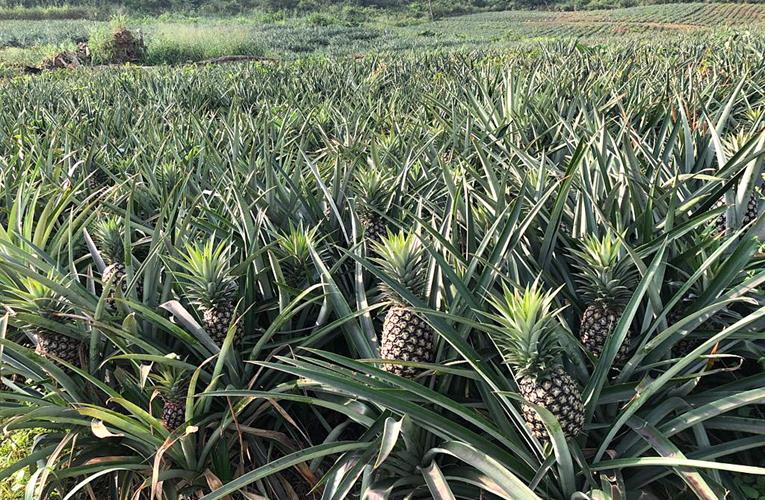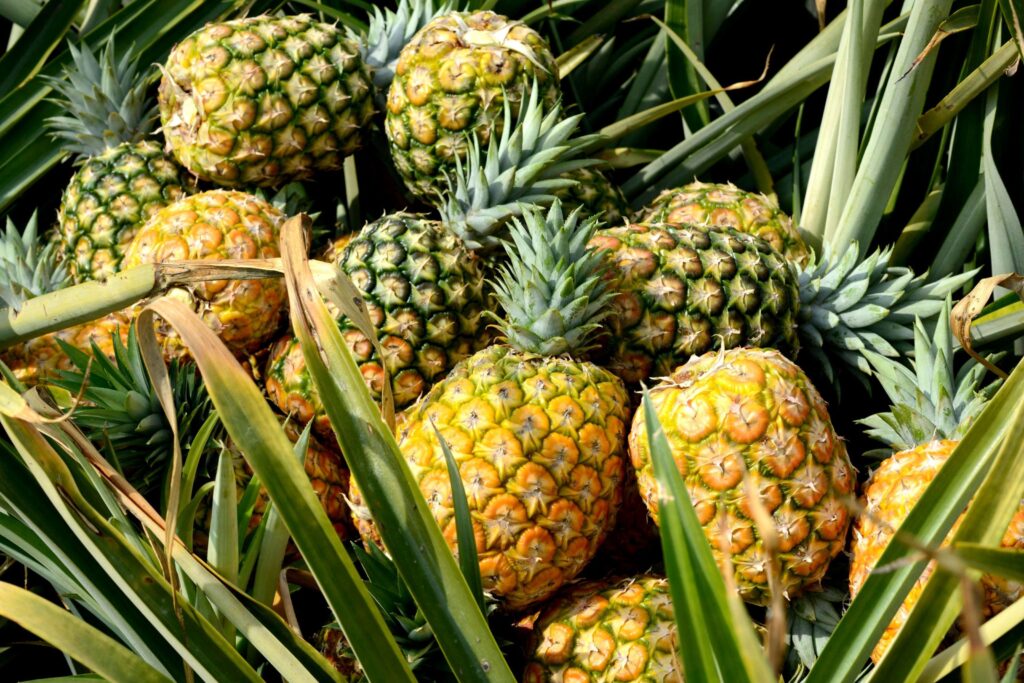
Fresh Pineapple
1. Introduction to Pineapple: Origins and Early Cultivation The Native Origins of Pineapple Ah, the humble pineapple. This tropical fruit, known for its sweet and tangy taste, has a history as vibrant as its golden flesh. Believe it or not, pineapples are native to South America, specifically the region that encompasses present-day Brazil and Paraguay. So, the next time you enjoy a piña colada, raise your glass to these tropical origins! Early Cultivation Techniques. Back in the day, cultivating pineapples wasn’t as easy as picking one up from your local grocery store. Early indigenous peoples had to develop their own cultivation techniques to grow this delicious fruit. They figured out that pineapples thrived in a warm climate, so they planted the tops of pineapple fruit to propagate new plants. Talk about resourceful gardening!
2. Spread of Pineapple Cultivation: Exploring Historical Trade Routes Pineapple’s Journey to Europe. Thanks to some adventurous explorers and their love for tropical treats, pineapples made their way to Europe in the 15th and 16th centuries. These brave souls brought this exotic fruit back with them after their explorations of the Americas. It didn’t take long for pineapples to become the talk of the town among European nobles and aristocrats. Pineapple in Asia and Oceania. While Europe was swooning over the pineapple, it also made its way to Asia and Oceania through trade routes. Countries like the Philippines, Thailand, and Malaysia became known for their pineapple cultivation, adding their unique flavors and techniques to the mix. The pineapple truly became a global sensation! Pineapple’s Introduction to the Americas Wait a second, didn’t pineapples come from the Americas in the first place? Yes, indeed! But it wasn’t until the 19th century that pineapples were successfully cultivated on a large scale in North and Central America. Hawaii, in particular, became a prominent player in pineapple production, supplying the world with its juicy goodness.

3. Pineapple as a Symbol of Status and Wealth in Ancient Civilizations: Pineapple in Ancient Mayan Culture Long before the pineapple became the star of Hawaiian pizzas, it held a special place in ancient Mayan culture. The Mayans considered pineapple to be a symbol of hospitality and prosperity. It was often used in religious rituals and feasts, showcasing its significance in their society.Pineapple’s Significance in Polynesian Society. The people of Polynesia, including the famous Hawaiian islands, cherished the pineapple just as much. Pineapples were seen as a symbol of wealth and royalty, and they were often presented as gifts to show respect and honor. You can’t blame them – pineapples are pretty regal-looking! Pineapple’s Role in European Royalty and Nobility Speaking of regal, pineapples were all the rage among European royalty and nobility during the 17th and 18th centuries. These luscious fruits were considered a luxurious delicacy and a display of wealth. In fact, people would rent pineapples for parties to show off their extravagant lifestyles. Can you imagine renting a fruit just to impress your guests? Talk about pineapple power!
4. Pineapple in the Age of Exploration: European Encounters and Global Distribution Christopher Columbus and the Discovery of Pineapple Ah, good old Christopher Columbus. He didn’t just stumble upon the Americas; he also stumbled upon the pineapple during his travels. It is said that Columbus and his crew encountered this prickly fruit on the island of Guadeloupe in the Caribbean. Thank you, Columbus, for introducing us to this tropical delight! Pineapple’s Introduction to Africa Once the pineapple made its way to Europe, it didn’t waste any time spreading its fruity influence. European colonizers brought pineapples with them to Africa, where the fruit found a new home and thrived in countries like Ghana and Kenya. Pineapples truly knew no bounds! Pineapple’s Impact on European Colonization Believe it or not, the pineapple played a part in European colonization. As Europeans explored new territories, they brought pineapple plants with them, not only for sustenance but also to remind them of home. This symbol of familiarity helped ease some of the hardships faced by early colonizers. Who knew a fruit could bring so much comfort?So there you have it – a juicy journey through the history of pineapple. From its native South American roots to becoming a symbol of status and wealth in various cultures, the pineapple has definitely left its mark on the world. So the next time you indulge in a pineapple treat, remember the fascinating tale of this tropical sensation. Cheers to pineapples!

5. Industrialization and the Rise of Pineapple Plantations: Pineapple Plantations in Hawaii With its tropical climate and volcanic soil, Hawaii became the perfect location for large-scale pineapple production in the late 19th century. The first commercial pineapple plantation was established in 1885, and soon, the industry boomed. The unique variety of pineapple grown in Hawaii, now known as the “Hawaiian pineapple,” quickly gained popularity for its exceptional taste and quality. Pineapple Cultivation in Central and South America While Hawaii dominated the pineapple trade, countries in Central and South America also began cultivating the fruit on a large scale. Places like Costa Rica, the Philippines, and Brazil entered the market, challenging Hawaii’s pineapple monopoly. These regions benefited from their favorable climate and began exporting pineapples worldwide, making the fruit more accessible to consumers globally.Technological Advancements in Pineapple Production As the demand for pineapples grew, so did the need for technological advancements in cultivation and processing. Innovations like improved irrigation systems, mechanized planting and harvesting methods, and advances in canning and preservation techniques revolutionized the pineapple industry. These advancements increased efficiency and allowed pineapples to be grown and shipped year-round, ensuring a steady supply for consumers around the world.
6. Pineapple in Popular Culture: From Art to Advertising Pineapple in Art and Literature Pineapples have been a source of inspiration for artists and writers throughout history. From still-life paintings to romanticized depictions of tropical landscapes, pineapple motifs have made their way into various artistic forms. Pineapples have also been featured in literature, symbolizing themes of hospitality, luxury, and exoticism. Pineapple as a Symbol in Design and Fashion. The pineapple’s unique shape and vibrant appearance have made it a popular motif in design and fashion. From home decor items to clothing and accessories, the pineapple symbolizes warmth, welcome, and a tropical lifestyle. Its iconic image is often used to create a playful and cheerful aesthetic. Pineapple’s Role in Advertising and Marketing Pineapples have been cleverly integrated into advertising and marketing campaigns, particularly in the food and hospitality industries. The fruit’s sweet and tangy flavor, coupled with its association with relaxation and indulgence, makes it a perfect choice for promoting products such as beverages, desserts, and tropical getaways. The pineapple’s appeal extends beyond its taste, as it also represents a sense of adventure and escapism.

7. Modern Pineapple Industry: Production and Commercialization Global Pineapple Production and ExportationToday, pineapples are grown and exported by numerous countries worldwide, making it one of the most widely consumed tropical fruits. Major producers include the Philippines, Thailand, Costa Rica, and Colombia. These countries have established efficient supply chains to meet the demands of both domestic and international markets. Pineapple Varieties and Hybridization Over time, various pineapple varieties have been developed through selective breeding and hybridization. The result is a wide range of cultivars, each with its own flavor profile, shape, and color. Some popular varieties include the Gold, Queen, and Smooth Cayenne pineapples. This diversity allows consumers to enjoy different pineapple experiences based on their preferences.Sustainable Practices and Challenges in Pineapple Farming As pineapple production has expanded, so has the need for sustainable farming practices. Efforts are being made to reduce the environmental impact of pineapple farming, such as minimizing the use of pesticides, implementing efficient water management systems, and promoting biodiversity. Challenges still exist, including the management of waste and the social and economic impact on local communities.
8. Conclusion: Pineapple’s Enduring Appeal and Continued Evolution From its origins in South America to its commercialization and global popularity, the pineapple’s journey has been remarkable. Its sweet and tangy taste, coupled with its distinctive appearance, has made it a beloved fruit worldwide. As the pineapple industry continues to evolve, we can expect further advancements in cultivation techniques, the development of new varieties, and a greater focus on sustainability. So, let’s raise a piña colada to this tropical wonder and its enduring appeal!
Today, it remains a popular fruit enjoyed in various forms, symbolizing a taste of the tropics and adding a touch of sweetness to our lives. As the pineapple continues to evolve and adapt to modern farming practices and consumer demands, its legacy as a cherished fruit with a fascinating history is destined to endure.


FAQ
1. Where did the pineapple originate from?The pineapple is believed to have originated in the region encompassing present-day Brazil and Paraguay in South America.
2. How did the pineapple spread to different parts of the world? The pineapple’s spread can be attributed to historical trade routes and explorations. It was introduced to Europe by Christopher Columbus and later made its way to Asia, Africa, and the Pacific Islands through colonization and trade.
3. Why was pineapple considered a symbol of status and wealth in ancient civilizations? Pineapple’s rarity and exotic appeal made it a coveted fruit in ancient times. Its association with wealth and luxury stemmed from its limited availability and the labor-intensive cultivation required, making it a prestigious offering and a symbol of hospitality.
4. How has pineapple cultivation evolved over time? From traditional farming techniques to modern industrialized plantations, pineapple cultivation has undergone significant changes. Technological advancements, such as hybridization and improved farming practices, have increased production and efficiency in meeting the global demand for this tropical fruit.